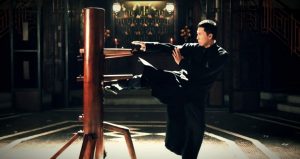Three Martial Arts Styles


Shootfighting is a style of combat sport with an emphasis on striking moves and grappling. There are few rules for what strikes and holds can be used, and the only prohibited parts are the eyes and groin. The sport originated in Japan and has taken off in the United States and Europe. Many organizations have developed their own martial arts styles and have even added Muay Thai to the mix.
Shootfighting uses several different styles of grappling and striking, but all three styles share the same basic principles. The fight ends if one fighter has been knocked out for a 10-count or is forced to submit by another fighter. In some situations, a fighter may break the submission hold with a rope. However, this will be counted as a third knockdown and an automatic loss. Shootfighting is a form of mixed martial arts, and the rules and guidelines are similar to those of other forms of mixed martial arts.
Silat
The silent martial arts style is a very versatile martial art, with techniques relying on all parts of the body to attack an opponent. The striking and thrusting techniques are aimed at the most vulnerable parts of the body. Silat techniques encompass close-range fighting, weapons training, and long-range fighting. The use of weapons is an important aspect of silat training, and many traditional schools emphasize the training of weapons.
Silat is an indigenous martial art practiced throughout Southeast Asia, including Indonesia and the Malay Archipelago. Practitioners of silat share a common culture and history. Their style emphasizes strikes, joint manipulation, and weaponry. This fluid art style has a rich history that can be traced back to pre-Islamic times.
Jeet Kune Do
Jeet Kune Do is a form of martial arts developed by Bruce Lee. He took the best aspects of many martial arts and combined them into one. He used the core symbol, the intercepting fist, to form the basis of his unique system.
The name Jeet Kune Do means “Way of the Intercepting Fist.” This style emphasizes strength and speed and emphasizes attacking at the moment of an attack. It also has an emphasis on real-world effectiveness and combat realism. The style combines both striking and grappling techniques, incorporating all sorts of different styles.
A Jeet Kune Do instructor can teach you the basic movements of the martial art. He will also teach you how to apply the techniques in contact-type combat. Jeet Kune Do instructors will teach you how to use these techniques in stand-up combat.
Hapkido
Hapkido is a Korean martial art primarily used for self-defense. It focuses on circular motions and the redirection of force. It is a suitable martial art for anyone, from security personnel to amateurs looking for a fun workout.
Hapkido is a versatile style that can be practiced by people of all sizes, from very small to extremely large. Its emphasis on weight redirection and manipulation makes it a great choice for people of all ages and fitness levels.
Brazilian Jiu-Jitsu
Brazilian Jiu-Jitsu is a grappling art that focuses on controlling the opponent with the legs and feet. It is often practiced in a guard position, but it can also be used from the ground. BJJ fighters attempt to take the opponent to the ground as quickly as possible, and they hope to escape the opponent’s guard position. While on the ground, they may try to sweep their opponent or apply joint locks or chokes.
Brazilian Jiu-Jitsu has evolved from the Japanese Jujutsu style. After being adapted by the Gracie brothers, it became known as Brazilian Jiu-Jitsu. They are often credited with developing BJJ, which is primarily a grappling and submission style. Many UFC champions have trained in BJJ.
